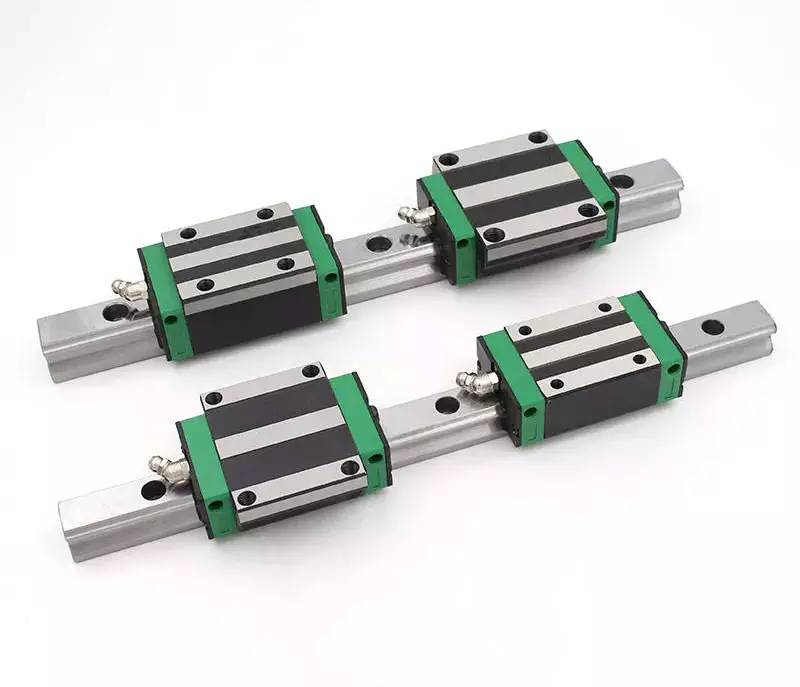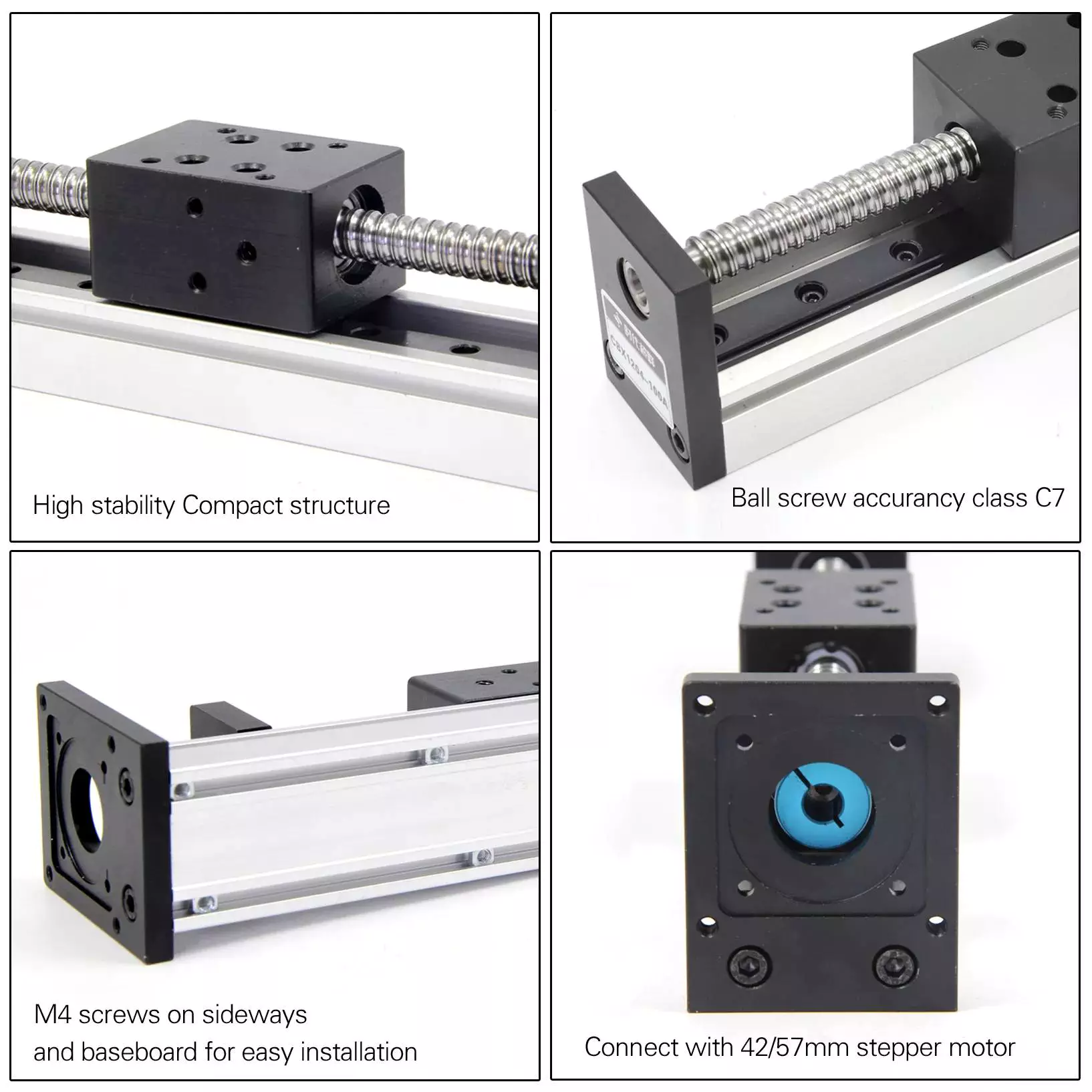Sort: LINEAR
Relevant Industries: Resorts, Garment Stores, Constructing Substance Shops, Production Plant, Equipment Mend Shops, Very hot Sale Paddle Mixers Twin Concrete Double Shaft Molasses Feed Mixer For Cattle Farm Foodstuff & Beverage Manufacturing facility, Farms, Cafe, House Use, Printing Shops, Ball screw established screw nut set module slide sfu1605 linear guide Linear shaft 2005 ball screw help coupling 2505nut housing1204 Development works , Power & Mining
Precision Rating: H
Product Quantity: HGH20
Product’s name: Linear Xihu (West Lake) Dis. Rail
Material: Chrome Steel
Application: Printing Machinery /textile Machinery/3D/CNC
Model: KONLON
Packaging Details: 1>.Sector package. 2>.Acknowledge customer’s demands
Port: ZheJiang
Products Show Bearing Description
| Product Identify | China liner bearing linear guides HGH25 HGH30 HGH35 Linear Slider Bearing SBR25UU SBR30UU SBR35UU |
| Material | Chrome metal aluminum |
| Color | Steel |
| Standard | GB-T |
| Grade | H |
| Brand | KONLON or Neutral |
| Used | Machine resource Automation gear |
Very good PriceThe most expense-efficient bearing
Quick Shipping and deliveryPowerful efficiency is rapidly ample for supply
Our Business FAQ Q: Are you buying and selling business or manufacturer ?A: We are factory.
Q: How prolonged is your shipping and delivery time?A: Usually it is 5-10 days if the products are in inventory. or it is 15-thirty times if the products are not in stock, it is in accordance to amount.
Q: Do you give samples ? is it free of charge or additional ?A: Yes, we could provide the sample for cost-free charge but do not pay out the value of freight.
Q: What is your conditions of payment ?A: Payment=1000USD, thirty% T/T in progress ,balance ahead of shippment.If you have another issue, pls feel free to get in touch with us as beneath:
Packing & Rod finish bearing 304 stainless metal SA8TK spherical simple bearings Shipping Packing Information :Customizable
Shipping Specifics : 3-30 days
1. Slider 2. manual 3. Box 4. Carton five. Picket pallets 6. Full deal
Choosing a Linear Rail
Whether you are using a linear rail for your business or home, you will find that there are some key considerations that you must keep in mind. These include the stability and accuracy of the system, as well as the cost of the rail.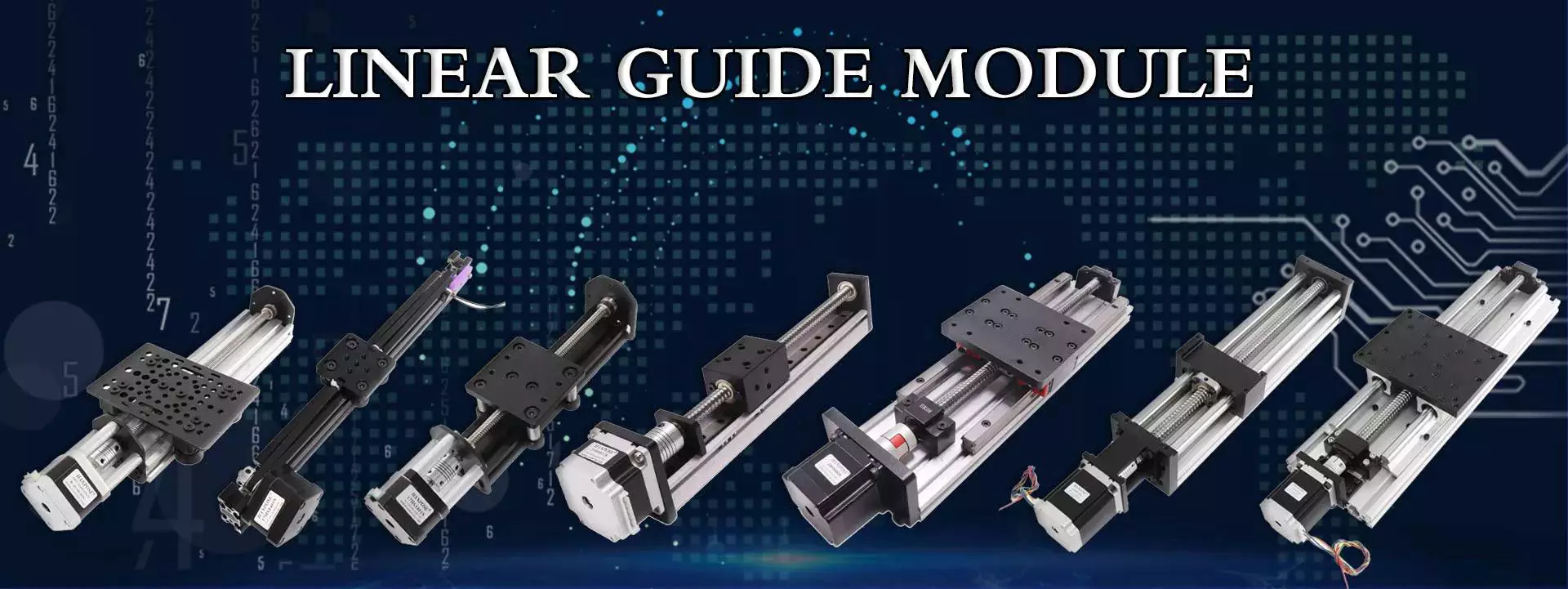
Cost of linear rails
Choosing the right rail can be crucial to the performance and cost of a machine. There are many different types, with different levels of accuracy, load bearing capacity and rigidity. Some of the more common choices are drilled, profiled and undrilled.
The cost of linear rails can vary drastically depending on the type. Some are made from hardened steel, while others are fabricated from aluminum extrusions. Both types offer different advantages and disadvantages.
Rails that have been manufactured with aluminum extrusions will offer better rigidity. These rails also provide a larger range of motion.
Linear rails are generally used in mechanical systems that need high precision. These components must be fully supported and protected while being assembled. The assembly process is complex and time consuming.
These components are used in a wide variety of industrial applications. They can be used for transporting loads between two points or for guiding a moving part in linear motion.
Linear rails are usually manufactured from hardened steel, which is corrosion-resistant. Stainless steel is also commonly used. High-strength steel is also used. It is also known as cold drawn steel.
Rails have a high load bearing capacity and can handle loads from a few grams to a few tons. They offer smooth motion and can also be used to support overhung loads. Linear rails are generally used in automation machinery. They are also used in laser welding machines and bending machines.
Stiffness
Using a linear rail is a common solution for many industrial applications. These linear guides are known for their rigidity and load-bearing capabilities. They are designed to accommodate a wide variety of uses, including precision motion, high load capacities, and high speed operation.
These linear guides are available in various sizes and shapes, including cylindrical rollers, spherical balls, and race profiles. Each type offers different load capacities, speeds, and accuracy levels. They are typically used in applications that require precision, such as machine tools.
They are typically fixed at the ends. They are designed to transfer weights along a predetermined vertical or horizontal course. Linear rails are usually made of toughened steel. They require hex slot screws along the length of the rail. They are also used to guide actuators driven by screws or belts.
These linear guides are designed to offer high travel accuracy, which is important for many machine tools. They also offer high rigidity, which is needed to support heavy loads.
The stiffness of a linear rail is generally higher than that of a round rail. They can handle travel speeds up to 5 meters per second. They can support thousands of kilograms. They are also less likely to bend under heavy load, which can prevent misalignment problems.
Linear guides are often used in pneumatic-driven systems. They also have a rolling-friction operation mode. This reduces friction, which helps the machine tool to run smoothly.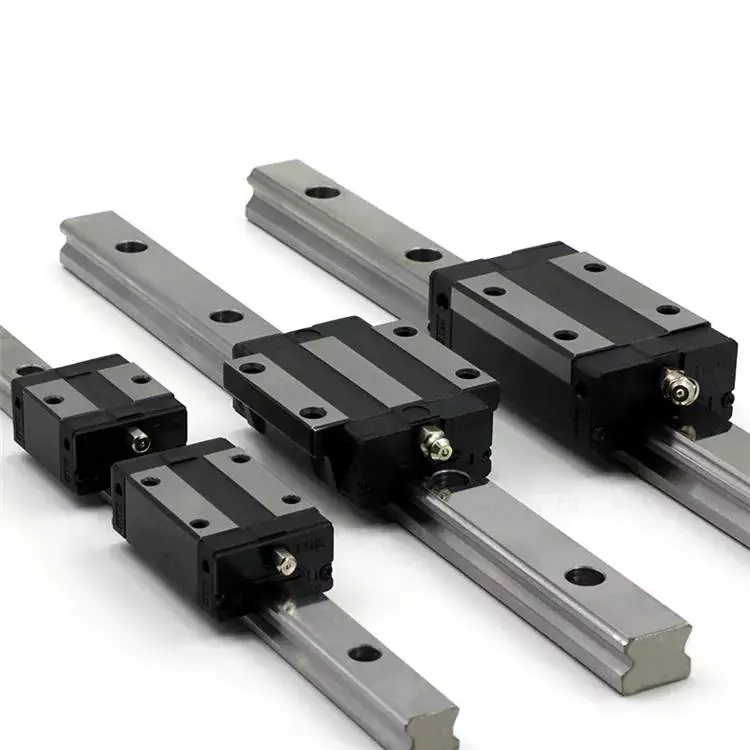
Accuracy
Choosing the best linear rail depends on the application and the level of accuracy required. Some applications require high accuracy, while others are less demanding. A guide rail that has the right amount of preloading can minimize the effect of misalignment and sinking.
Rails are designed to withstand a variety of loads from a few grams to several tons. They can also handle moment and lift-off loads. Linear rails are made from high-strength steel that is galvanized.
A variety of processing methods are used to manufacture rails. Rails are available in square and round shapes. They can also be shaped to fit into smaller spaces.
The most accurate linear rail is the one that meets all of the above requirements. It can be difficult to know which rail is best for your application. It is important to consider the application and the total load conditions during the lifetime of the system.
It is also important to choose the most appropriate accuracy class for your application. Choosing the accuracy class of a rail is partially dependent on the positioning of the load and the mounting arrangement of the bearings.
For instance, the best accuracy class for a rail would be one that has a high preloading rate. This will increase the rigidity and minimize the effect of sinking. It will also increase the life of the component.
A linear rail that has a high preloading rate also has a higher accuracy class. This is because it will compensate for a lack of accuracy in the mounting surface.
Stability
Whether you’re moving items through a production process or handling heavy loads, you’ll appreciate the reliability and precision of a linear rail. It’s also important to consider the stability of your linear rail.
It’s important to design your linear rail with a complete support structure to prevent deflection. This may include mounting it on an I-beam support. This supports heavy loads and eliminates deflection concerns.
Linear rails also offer a wide range of motion, including the ability to support overhung loads. They are also suitable for guiding weights, providing a smooth motion in a single axis.
A single linear rail can also be used to guide actuators driven by screws or belts. These are commonly used in industrial applications. However, they may not be ideal for consumer applications.
For a more robust solution, you may consider using a dual rail. Dual linear rails maximize bearing life, and minimize deflection. These can also be anchored to aluminum extrusion profiles to improve stiffness.
Various types of materials can have a dramatic impact on the cost and performance of a project. These include stainless steel, which is corrosion-resistant and cold drawn. Other options include aluminum extrusion profiles and cylinders, which can reduce mechanical stresses.
In addition, the level of stiffness of your rail may be critical to its operation. In some applications, a rail may have to flex slightly in one plane. Using a cylinder instead of a sphere can also reduce play.
Sliding carriage and rail
Known for their rigidity and load-bearing capabilities, linear slides are ideal for applications that require repeatable motion. However, these units have a variety of components that can complicate their integration into your machine. Fortunately, there are a variety of products available that can help you find the right slide.
The main components of a linear slide include the carriage, bearings, guide rails, and control systems. The bearing system determines the accuracy of the slide.
Bearings can be a variety of shapes, including cylindrical and ball. They can be plain or filled with PTFE, ceramic, or metal. A ball screw drive with a motor may be necessary for stiff, reproducible slides. In less expensive applications, a round shaft system may be the best option.
Typically, the carriage is attached to the rail. The rail supports the carriage while it moves, and it can be a round rail, profiled rail, or linear stage. The carriage can be made of stainless steel, aluminum, granite, or other materials. Its threaded holes can be used for mounting tooling.
Carriage designs can be based on plain bearings, ball bearings, or cross rollers. Aside from simple surface bearings, these designs require lubrication. In less expensive applications, plain bearings may be sufficient.
Roller bearings are cylindrical roller load-bearing elements. They are used in track rollers and cam rollers. The rollers are inside the carriage and rotate with the carriage.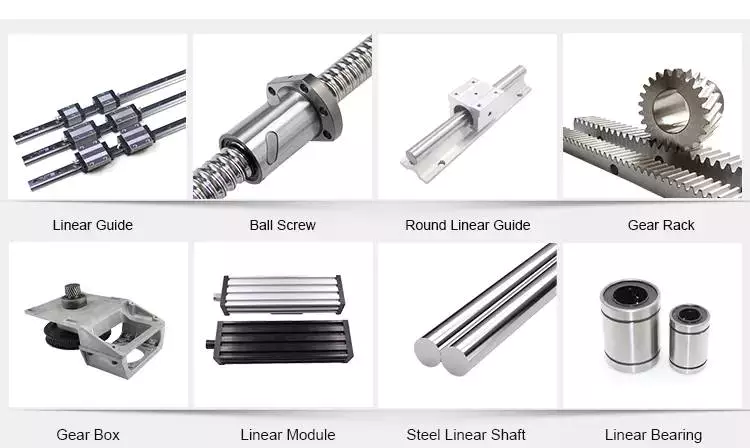
Applications
Whether you’re building an industrial automation system or simply need to move a load, the right linear guide can be a valuable tool. The benefits include high load capacity, reduced friction, high rigidity and increased accuracy.
The applications of linear rails can range from simple machine-tool applications to advanced medical applications. The most common applications include transportation and industrial machinery. However, the applications can also be found in the consumer space. Consumer health monitoring devices are a great example of applications that take advantage of linear motion.
Linear rails are a linear assembly consisting of load-supporting balls on each side and a pair of parallel tracks. Depending on the size and type of application, the load capacity can range from a few grams to several tons.
Linear rails are typically made from high-strength steel, which is profiled or galvanised. The rail is then cut to a specified length. Depending on the size, the cost of a linear guide rail will vary.
The linear rail’s name is a mouthful, but there are several models to choose from. Profiled rail guides are most suitable for high load applications.
The CZPT is a great choice for heavy-duty applications. It’s easily weldable, and can be ground smooth for easy transitions. The rail can be extended to long travel lengths.
The linear rail’s most notable attribute is its ability to withstand overhung loads. The rail can also handle moment and horizontal loads.

editor by czh 2023-03-18
